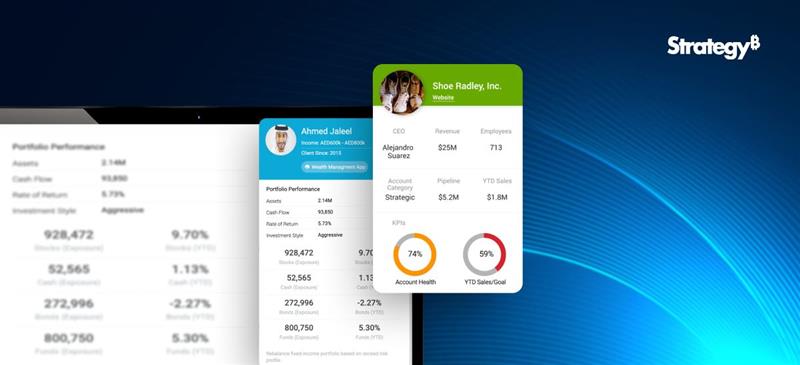Digital transformation connects disparate data points and platforms across an organisation’s larger ecosystem – both online and offline. It provides a clear picture of how to improve, expand, and add value to the organisation.
Most businesses conduct their operations on the cloud. As businesses migrate data to the cloud, much of what is done is digitally replicating existing services. True digital transformation, on the other hand, implies much more. A digital transformation can be transformative across an organisation by establishing a technology framework to channel all the services and data into actionable insights that can improve almost every aspect of the organisation.
Digital transformation can be used to re-evaluate and optimise your systems and processes, ensuring they are interrelated and flexible enough to provide robust business intelligence and position your company for future success.
How can digital transformation change different aspects of an organisation?
Digital transformation can be intimidating in the first stage despite all the aura associated with it. But there is no need for a second thought once the initiative is taken. A well beginning is half done, right? Well, let’s discuss how digital technology transforms the crucial areas of an organisation.
HR and Digital Transformation
Automating HR processes and making them data-driven is termed HR digital transformation. An automated performance management system is implemented, and the managers and employees access the platform to view and update it and gather data for salary appraisals, screening processes and many other activities.
Well, what does HR digital transformation look like? It is not about HR but the whole metamorphosis an organisation undergoes after implementing digital transformation. Let’s delve deep into HR Digital transformation and understand how digital technology can invariably bring changes to the HR department.
Digital Onboarding
The prevalence of hybrid work mode and hybrid work atmosphere has made digital onboarding the need of the hour. The employee onboarding process is done in person and is time-consuming, labour-intensive, and sometimes inconsistent. So many checklists must be ticked to complete the process like:
- Is all required reading and learning completed?
- Have they checked in with the HR assistant?
- Have they completed all the required onboarding formalities?
- An excellent digital onboarding process is structured and strategic, ensuring new employees feel welcomed, assisted, and trained to do their best work.
Employee Self-Service Portals
Employees have many queries regarding company policies, benefits, and basic HR information.
Every question can instead be answered by an easily accessible employee self-service information portal as part of your HR digital transformation.
Aside from routine information requests, self-service portals (also known as HCM Systems) can provide employees and managers with access to critical information, such as:
- NPS ratings
- Company news and workplace policies
- Performance management information such as self-evaluations, objectives, training, and ongoing trends
- Job opportunities
- Wellness polls
- Minutes of meetings and updates to the knowledge base
- Employees can take advantage of available training opportunities to improve their skills.
People Analytics
The application of data-driven decision-making to HR processes to enhance employee performance, commitment, and achievement is known as people analytics. Organisations use people analytics to improve talent management, employee retention, succession planning, and recruiting.
The information gathered helps employees to succeed and feel more fulfilled at work. The data collected from team-building exercises and other data collection and analysis methods can be used to develop an effective L&D strategy, allowing for upskilling and reskilling while also increasing productivity and employee satisfaction.
AI-Powered Applicant Tracking Systems
It’s no surprise that many more giant corporations have adopted AI-powered applicant tracking systems (ATS). No one can afford to miss out on a compatible candidate in this competitive period because they’re manually sorting through so many unqualified candidates.
Artificial Intelligence-powered applicant tracking systems use pre-programmed filters based on keywords, capabilities, years of work experience, education, and so on to eliminate unsuitable applicants before they are approached in person or interviewed.
ATS also shares job listings to multiple platforms, conduct pre-interview screening, schedule interviews, facilitate candidate evaluations from numerous interviewers, and provide the data required to assess the success of your hiring processes. It also makes sure to make unbiased decisions regarding the employee selection process.
HR Chatbots
HR chatbot is a convenient substitute for visiting the HR department to seek answers to simple questions or doubts. The most carefully planned digital employee onboarding process and employee self-service portal fail to resolve every question or concern your workforce may have. On the other hand, HR chatbots allow HR to create auto-response messages that instantly address some of the most frequently asked issues and concerns. Chatbots collect employee data sequentially as needed.
In a nutshell, digital technology has the grit to fully transform every aspect of an organisation. Initially, it can be intimidating as any new step, but it is worthy enough for the massive changes it can bring forth. It is for sure that the digital transformation movement will gain momentum.
The workforce will be affected by the next wave of digital transformation in a way that traditional automation cannot, and the nature of labour in many roles will shift completely. This will be the outcome of a trifecta of factors, including the arrival of a generation who grew up with technology, the widespread use of traditional technologies that eliminate the majority of repetitive activities, and the quick development of cognitive technologies. Even though HR departments are increasingly taking charge of their digital transformation, it is still required to collaborate closely with the technology department to make sure that the systems and tools you choose are in line with the enterprise’s broader strategy.
According to IDC, by 2023, digital transformation will account for 53% of all information and communication technology investments. Let us not dare to miss this bus!




